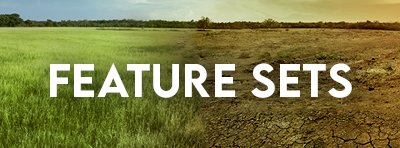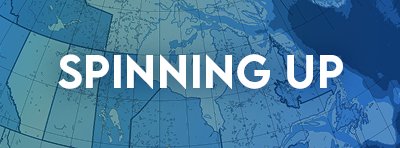
The Water Institute - Baseflow trends across Canada: The impact of climate change
This recent article in The Water Institute’s newsletter - WaterResearch - highlights a statistical analysis of baseflow trends to streams and rivers across Canada. The results of this work can inform water resources management by identifying the direction of change in groundwater availability across Canada and regions where interventions may be necessary.

CBC News - Dwindling water supply leaves some southern Alberta farmers dry
Extended drought in southern Alberta is resulting in unprecedented impacts to local farmers and communities. This is an exceptional article which highlights the interconnectedness of water resources - demonstrating the domino effect that can occur when over-extraction of water from one river or reservoir results in the need to draw from other sources, which can then run dry themselves .

Canada1Water stream-network analysis for national scale hydrological modelling
Learn more about the Canada1Water contribution to the National Hydrologic Network’s national stream database.

Canada1Water data framework: Harmonized national-scale hydrographic, soils, and hydrogeologic information to support groundwater and surface water analysis
Several members of the Canada1Water team attended the CWRA Annual Conference in Halifax last month. It was a really great opportunity to get out into the Canadian water resources community and introduce some of the work we’ve been doing. Eric Kessel delivered a poster presentation (see below) to highlight just a handful of the many datasets that are being produced as part of the project.

CBC News - River levels and rain forecasts at 'unprecedented' lows in most of B.C.
Drought conditions continue to intensify across British Columbia, with 8 of 34 water basins currently classified as Level 5 on the drought index (advese impacts almost certain), and another 13 water basins classified as Level 4 (adverse impacts likely). This new article on CBC News provides key insights on the impacts of these drought conditions, with commentary from the provincial River Forecast Centre and Ministry of Agriculture. The frequency and severity of drought conditions in this region seem to be increasing; what does the future have in store for BC’s water cycle? This is what the Canada1Water project aims to answer!

The Globe and Mail - Alberta’s iconic cattle ranches face critical moment as two-year drought continues
While springtime flooding is a drastic and near-immediate reminder of the importance of managing water resources, as we move into the summer months we will invariably hear more and more about the impacts of drought on regional hydrology throughout Canada, impacts which are often even more disastrous (though less ‘flashy’) than catastrophic flooding. This article in the Globe and Mail sounds the alarm on drought in southern Alberta, specifically the Foothills County region, which has just declared an agricultural disaster amid years of ongoing drought.

Collaborate with the C1W team! (Apr 2023 update)
To broaden the number of project collaborators, the project has an ongoing series of engagement meetings with potential collaborators.

Drilling down: Using nested models for deeper insights
Nested within Canada1Water’s continental-scale simulation are higher-resolution models that researchers like hydrogeologist Melissa Bunn can use to zoom in on specific watersheds and answer practical questions — aided by a built-in data and modelling framework that can run high-resolution models anywhere across the country.

Ask Us Anything - Our answers to common questions about Canada1Water
“A conceptually, comprehensive, physically based hydrologic modelling platform developed by a Canadian company is changing the way we think about, study and plan water resources – surface and groundwater – in Canada, now and long into the future.” A new feature in Ground Water Canada puts a spotlight on the Canada1Water project, detailing the mission of this world-class modelling project and exploring potential use cases.

The Canada1Water ‘value add’ – datasets
Even before Canada1Water’s hydrologic simulation goes live, the project will deliver value to decisionmakers and researchers by making its datasets publicly available. Hydrogeologist Eric Kessel gives a preview of what’s to come, starting with a highly anticipated data product this summer.

“Irreducibly unpredictable”
The climate is such a vast and complex system that it generates a lot of ‘noise’, making it hard to distinguish patterns and trends. By developing more precise models for Canada1Water, Senior Climate Scientist Andre Erler and his colleagues hope to bring newfound clarity to Canada’s climate picture — and solve some enduring puzzles.

Putting the weight of the world to work
Any model that aims to inform real-world decisions needs to be accurate. But how do you verify accuracy when there are few “on-the-ground” measurements to check against? For Canada1Water, one option is to let gravity do the talking. John Crowley of the Canadian Geodetic Survey explains how time-variable gravity, measured from space, will help validate C1W results.

Three steps to simulation
With the underlying datasets assembled into a single integrated model, Canada1Water is now in its spin-up phase. Hydrogeologist Omar Khader describes what’s involved in getting the models ready to run continental-scale simulations.

phys.org - New review of world water resources provides sustainable management strategies
This article highlights a new study, published in Nature Reviews Earth & Environment, which looks at worldwide water management. Surface water and groundwater are interconnected but often managed separately, we must consider them as one resource so that neither gets depleted. This study took data from satellites, climate models, monitoring networks, and many scientific papers to investigate water management strategies and tied in the sustainability component.

CBC News - Red River expected to spill its banks in Manitoba this spring as flood outlook worsens
This article in CBC News highlights the possible flood danger to Manitoba communities along the Red River. The Red River originates at the confluence of the Bois de Sioux and Otter Tail rivers between the U.S. states of Minnesota and North Dakota, flows northward through the Red River Valley and into Manitoba. It empties into Lake Winnipeg, whose waters join the Nelson River and ultimately flow into Hudson Bay. With heavier snowstorms south of the border this winter, the flood risk is increased.
